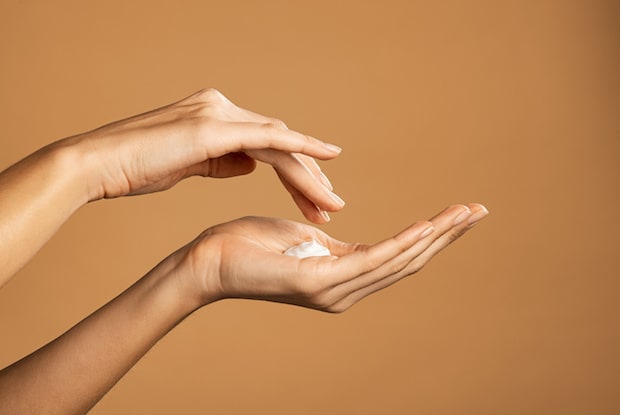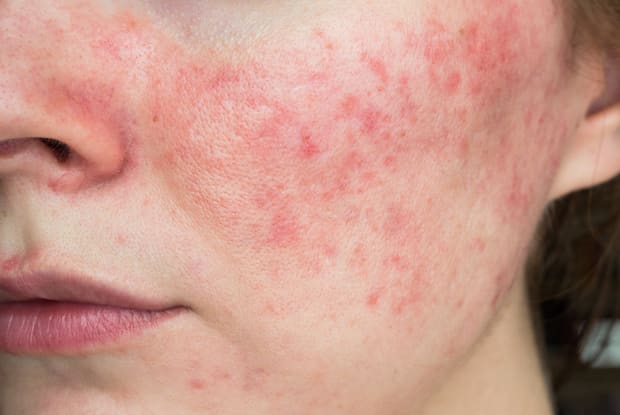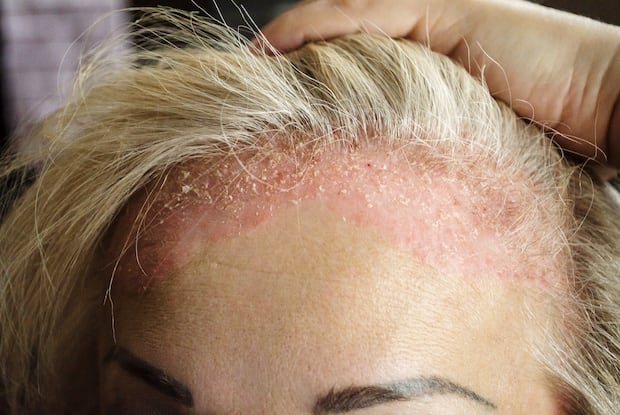Table of Contents
I. What are the Most Common Skin Disorders?
Understanding the Function of the Skin
The skin is the largest organ in the body and responsible for protecting all of the body's internal processes. It protects you from harmful things in your environment, like moisture, cold, sun rays, and germs. The skin also stores water, fat, and metabolic products. Your skin says a lot about your health, so you must keep your skin moisturized and healthy.
The skin is made up of three layers: the outer layer (epidermis), the middle layer (dermis), and the deepest layer (subcutis). The outer layer is subject to several different disorders because of its direct exposure to the outside world. Many people will experience skin disorders in their lifetime. Acne, psoriasis, and rosacea are three of the most commonly occurring skin disorders.
Each one of these conditions has its own symptoms and treatments. Depending on the state of your skin, your doctor may prescribe medications like Retin-A Gel, micro gel pump, or cream (tretinoin). You may also use Oracea (doxycycline), or Tazorac Cream or gel (tazarotene). Learn more about acne, rosacea, and psoriasis below. [1]

Understanding Acne
The entire body is covered with tiny pores that can trap oil, bacteria, dead skin cells, and dirt. When these substances clog the pores, pimples can form and cause acne. Acne can take an emotional toll on a person and cause permanent scarring, but several treatments are available.
Acne can occur almost anywhere on the body but is most common on the face, back, shoulders, chest, and neck. Blackheads and whiteheads are the two types of pimples that occur most often. Blackheads are at the skin's surface, which makes them look black because of their exposure to the oxygen in the air. Whiteheads are underneath the skin, which makes them look white. Many other lesions can occur on the skin, including papules, pustules, nodules, and cysts. [2]
a. Risk Factors
Anybody can get acne, but some factors make some people more likely to have skin problems than others. Adolescents and teenagers going through puberty are most at risk for acne. Pregnant and menopausal women may also experience acne. Other risk factors can include:
- Parents who previously had acne
- A diet high in carbohydrates, bread, and chips
- Taking corticosteroids and medications like birth control pills
- Coming in contact with greasy or oily substances
- Friction or pressure on the skin (helmets, cellphones, tight collars, etc.) [3]
Rosacea Overview
Over 14 million people have rosacea in the United States. This disorder causes redness and visible blood vessels on the face. In some cases, it can also produce red, pus-filled bumps. Rosacea usually occurs in flare-ups and may go away for periods. Women between the ages of 30 and 50 are most likely to get this disease. Having fair skin also makes it more likely to get rosacea. [4]

The symptoms of rosacea can vary greatly, but symptoms usually include facial redness, red bumps, eye problems, and an enlarged nose. Rosacea has been shown to affect the eyes, making them red and swollen. If you experience rosacea for a long time, it may begin to affect the nose, thickening the skin and creating a bulbous appearance (rhinophyma).
a. Risk Factors
Scientists think that rosacea runs in families, and you are more likely to have rosacea if a close relative also has rosacea. Other risk factors can include:
- Having other skin conditions like acne in the past
- Being fair-skinned
- Having an H. Pylori intestinal infection
- Being infected by a common skin mite (Demodex) [5]
What is Psoriasis?
Psoriasis differs a bit from the previous two skin conditions. Psoriasis is thought to be an autoimmune condition that causes an increased production of skin cells. Normally, skin cells are replaced every three to four weeks, but in psoriasis, they reproduce every three to seven days. This constant build-up creates silvery patches of flaky skin on the elbows, knees, scalp, and lower back. The immune system helps fight and protect against disease and infection. Sometimes, the immune system mistakenly attacks healthy skin cells in the case of psoriasis. The types of psoriasis can include:
- Plaque psoriasis: This is the most common type that causes itchy and tender skin patches.
- Nail psoriasis: Affects the fingernails and toenails, causing pitting and nail discoloration.
- Guttate psoriasis: Guttate psoriasis is common in young adults and children, triggered by a bacterial infection.
- Inverse psoriasis: Causes patches of red skin on the groin, buttocks, and breasts.
- Pustular psoriasis: Causes pus-filled lesions on the hands or soles of the feet.
- Erythrodermic psoriasis: Least common type that covers the body in a rash that often peels and itches.
- Psoriatic arthritis: Causes swollen, painful joints similar to arthritis. [6]

This disease is typically chronic, but you can experience periods of remission. Most people have small patches of psoriasis, but it may affect the body's large swaths in more severe cases. Classic symptoms of psoriasis usually include red patches of skin, dry and cracked skin, swollen joints, stiff joints, and a burning sensation. [7]
a. Risk Factors
Even though psoriasis is different from acne or rosacea, the risk factors are fairly similar. You are more likely to get psoriasis if you have a family member with the same condition. These genetics can affect the immune system and leave you susceptible to psoriasis triggers. Common triggers include:
- An injury to the skin
- Smoking
- Stress
- Throat infections
- Other immune disorders
- Hormonal changes, particularly in women
- Drinking alcohol excessively [7]
Treatment Methods
Skin disorders can be difficult to treat because everyone has unique skin triggers. For some, conditions like acne may clear up on their own as time goes on. In more serious psoriasis and rosacea cases, medications are often needed to improve symptoms and reduce the frequency between outbreaks. Small lifestyle changes can improve your general skin condition, like removing all your makeup before bed, avoiding stress, and eating a nutritious diet. [8]
If acne does not improve on its own, you may be prescribed Retin-A Gel (tretinoin). Retin-A is a medication that contains vitamin A, which helps the skin renew itself. It can also reduce the appearance of fine wrinkles and skin discoloration. Through Canadian Med Center, this drug is available in Retin-A Micro Gel Pump or cream. [9]
To reduce the redness and pimples of rosacea, Oracea (doxycycline) may be prescribed. Oracea reduces skin inflammation and may improve symptoms of rosacea. Psoriasis can be a bit harder to treat, depending on the severity of your condition. Tazorac Cream (tazarotene) is often prescribed to affect the growth of skin cells. It may also be used for acne but has shown to be effective in affecting the plaques of psoriasis-affected skin. [10]
The content in this article is intended for informational purposes only. This website does not provide medical advice. In all circumstances, you should always seek the advice of your physician and/or other qualified health professionals(s) for drug, medical condition, or treatment advice. The content provided on this website is not a substitute for professional medical advice, diagnosis, or treatment.
